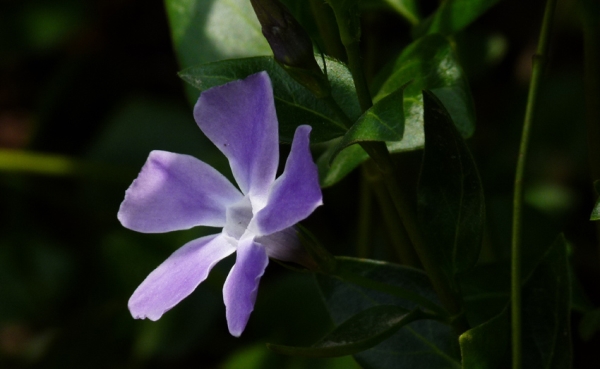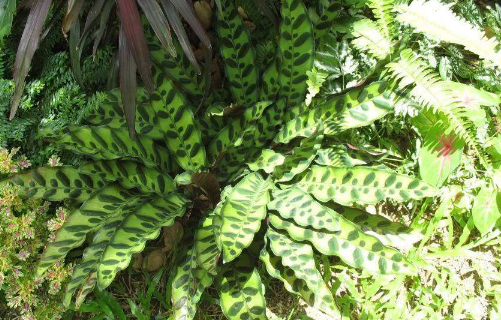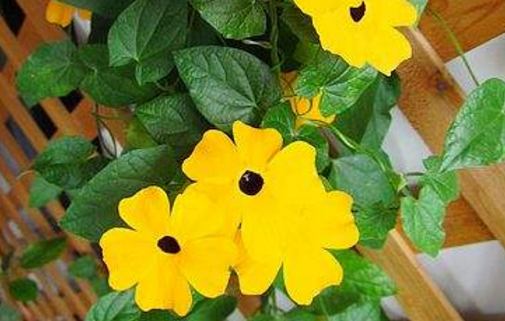The reason why Catharanthus roseus does not bloom
Soil problem
If the alkaline and poorly ventilated clayey soil is used in the basin soil of Changchun vine in the process of culture, it may lead to poor drainage, poor air permeability or even too barren, resulting in poor growth of Changchun vine and non-flowering.

Too much watering
It is necessary to reduce watering during the flowering period of periwinkle, so that the flowers of periwinkle will be colorful. But if too much watering, it is easy to cause it not to blossom.
Improper fertilization
If the growth process of Changchun vine lacks these elements such as nitrogen, phosphorus and potassium, it will cause Changchun vine not to blossom. However, if excessive fertilization will lead to serious root burning, it will have a negative impact on the whole plant.
After understanding the reason why Changchun vine does not blossom, do you know what the flower language of Changchun vine is?
The floral language of rosette vinca
The flower words of Changchun vines have pleasant memories, everlasting youth, and the meaning of firmness. Because it is a rooting plant, its ability to adapt to the environment is very strong, so some people regard its flower language as adaptation. Those who are blessed by flowers and leaves and Catharanthus roseus are not afraid of adversity. Having a bad environment is a state of affairs, and it is nothing in the face of lovelorn once or twice.
The above is about the reasons why Changchun vines do not blossom, if you encounter any problems in the breeding process, please pay more attention to the four Seasons Plant Network!
Morphological characteristics of the culture method of Catharanthus roseus: evergreen vine semi-shrub. Vegetative stems lie or lie flat on the ground, and flowering branches are erect. The plant height is 30-40 cm. Leaves opposite, elliptic, apex acute; petiole on flowering branches short. The whole plant is glabrous except for hairy leaf margin, petiole, calyx and Corolla throat. The leaves are dark green with yellow and white markings. Flowers solitary in the axils of flowering branches and leaves, Corolla high dish-shaped, 5-lobed, flowers blue. The florescence is from April to May. The follicles are twin erect. Habits: like a warm, moist and sunny environment. The requirement of light is not strict, especially in semi-sunny environment. It is an evergreen plant with certain cold tolerance, and its growth peak is from June to ℃ in August and October every year. Resistant to cold and moisture. Suitable for fertile, loose and well-drained sandy loam.
Culture and cultivation management: mostly by ramet culture, but also can be cuttage, strip culture. The breeding period is in early April in spring or early September in autumn. Keep the basin soil moist during the growing period. During the growing period, fertilizers were applied once a month, and phosphate and potash fertilizers were added 2-3 times. The winter temperature must not exceed 0 ℃. Fusarium wilt, canker and leaf spot often occur and can be sprayed with the same amount of Bordeaux solution. Insect pests include shell insects and root wart nematodes, which are sprayed with 1000 times of imidathion EC and 3% furan granules to control root wart nematodes. Garden application: in the garden, the vine Catharanthus roseus is mostly used to observe the leaves on the ground, can be used as a flower border plant, planted around rockery, pebbles or other plants, can be used as rocks, highs and the edge of flower beds and for vertical greening. In addition, the vine stem has the advantages of fast growth speed and good hanging effect, and can be used as an indoor ornamental plant, which can be arranged on the edge of the stairs, on the railing or potted on the table. Native to the Mediterranean coast, India, tropical America. It is cultivated in Jiangsu, Zhejiang and Taiwan. Catharanthus roseus is an evergreen trailing subshrub, tufted. Nutritious stems lie down or lie flat on the ground. Flowering branches erect, 30-40 cm tall. Leaves opposite, elliptic, apex acute, leaves with yellow markings, slightly glossy; petiole on flowering branches is short. The whole plant is glabrous except for hairy leaf margin, petiole, calyx and Corolla throat. Flowers solitary in axils of flowering branches and leaves, Corolla salverform, blue, 5-lobed. The bony fruit is twin erect, flowering from 4 to 5 months. Catharanthus roseus has strong adaptability and rapid growth, and the growth peak is from June to August and October every year. The requirement of light is not strict, especially the semi-sunny environment is the best.
- Prev

The Propagation method of Arrow feather Taro
The main results are as follows: 1. The survival rate of Arrow feather Taro is higher in the propagation method of Arrow feather Taro, and it is best to reproduce in spring when everything recovers and the climate is warm. Choose a sunny day with a temperature of 18: 22 ℃. Choose a strong stem and cut off the root of the stem and leaf.
- Next

Why should black-eyed Susan take care in winter?
The reason why we should be careful to take care of black-eyed Susan in winter is that black-eyed Susan is not very hardy, so we need to pay attention to maintenance in winter to avoid her death. Judging from the information and the maintenance experience of some flower friends,
Related
- Fuxing push coffee new agricultural production and marketing class: lack of small-scale processing plants
- Jujube rice field leisure farm deep ploughing Yilan for five years to create a space for organic food and play
- Nongyu Farm-A trial of organic papaya for brave women with advanced technology
- Four points for attention in the prevention and control of diseases and insect pests of edible fungi
- How to add nutrient solution to Edible Fungi
- Is there any good way to control edible fungus mites?
- Open Inoculation Technology of Edible Fungi
- Is there any clever way to use fertilizer for edible fungus in winter?
- What agents are used to kill the pathogens of edible fungi in the mushroom shed?
- Rapid drying of Edible Fungi

